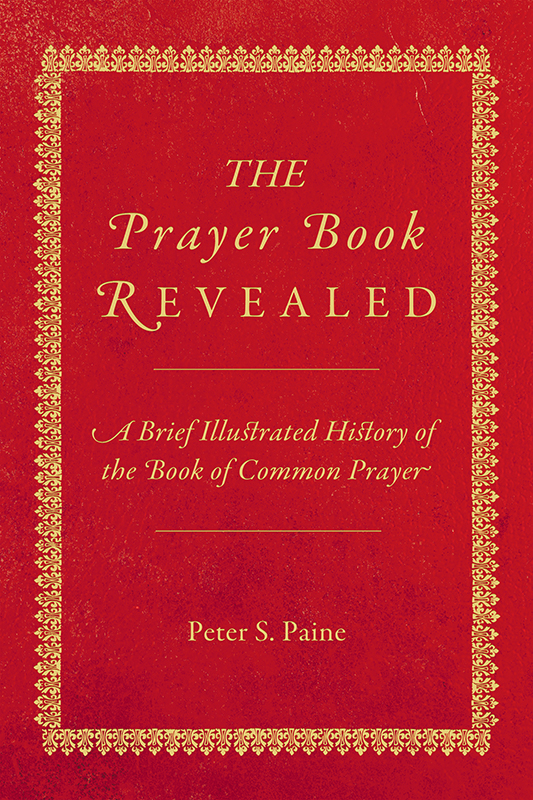The Prayer Book Revealed: A Brief Illustrated History of the Book of Common Prayer. Peter S. Paine. 142 pages. [Source: Library]
First sentence from the foreword: Liturgical handbook, literary masterpiece, manual of devotion, historical source book, deposit of doctrine, common denominator of a disparate and divergent Christian tradition--the Book of Common Prayer may be characterized in many different ways.
First sentence from the introduction: My father, the Reverend Humphrey John Paine, was brought up in a clerical family and was the grandson of the Reverend Jesse Paine.
First sentence from chapter one: One of Archbishop Cranmer's achievements was to reduce the number of daily services or Offices from eight to two: Matins and Evensong. The eight Offices of Matins, Lauds, Prime, Terce, Sext, None, Vespers, and Compline were the pattern of Benedictine monastic prayer, though the monks often combined the first two Offices. Secular or parish clergy carried the process further. For the clergy, these eight Offices were in the Breviary. The Book of Hours and Primer were used by lay people.
Peter Paine's father was a life-long collector of the Book of Common Prayer. His love for the book--and collecting the book--began at a very young age. He apparently loved, loved, loved to talk about the Book of Common Prayer and show off his collection. His son is using his father's collection as a catalyst to talk about the history and development of the Book of Common Prayer. I'm supposing that the two are linked closely in his mind. I do appreciate that the illustrations of this one--photographs, I believe--are showing off his father's collection.
This one is packed with information that I just didn't know. (Granted I am new to the subject. But still, I found it fascinating and informative.) The chapters are as follows:
- Lay Worship Prior to the Reformation
- Appendix 1
- The First Prayer Book of Edward VI, 1549
- The 1552 Revision and the Elizabethan Settlement
- Appendix 2
- The Early Stuarts
- The 1662 Revision and Seventeenth Century Additions
- Appendix 3
- The Non-Jurors and the Prayer Book in the Eighteenth Century
- Scotland, America, and Ireland
- Appendix 4
- Printers, Publications and Illustrations
- Prayer Book Revision in the Nineteenth and Twentieth Centuries
- The Spirituality of the Book of Common Prayer
- Epilogue
- Appendix 5
I learned so much. I loved the inclusion of the illustrations. I loved the history. I didn't necessarily love, love, love the author's tone in the last chapter which read almost like an apology for the theology of the Prayer Book. (Like the author was apologizing that the Prayer Book focuses in so much on sin and repentance and our desperate need for a Savior.) But overall, I really appreciated this one and found it a great read.
Chart lovers should appreciate each appendix which meticulously compares the contents of the editions of the Prayer Book.
I did find it thought provoking. I'd not realized that there were centuries were the book was very controversial. That there was a time when it was even banned. I also learned that Cranmer combined elements [of liturgy] from the eight monastic Offices.


No comments:
Post a Comment